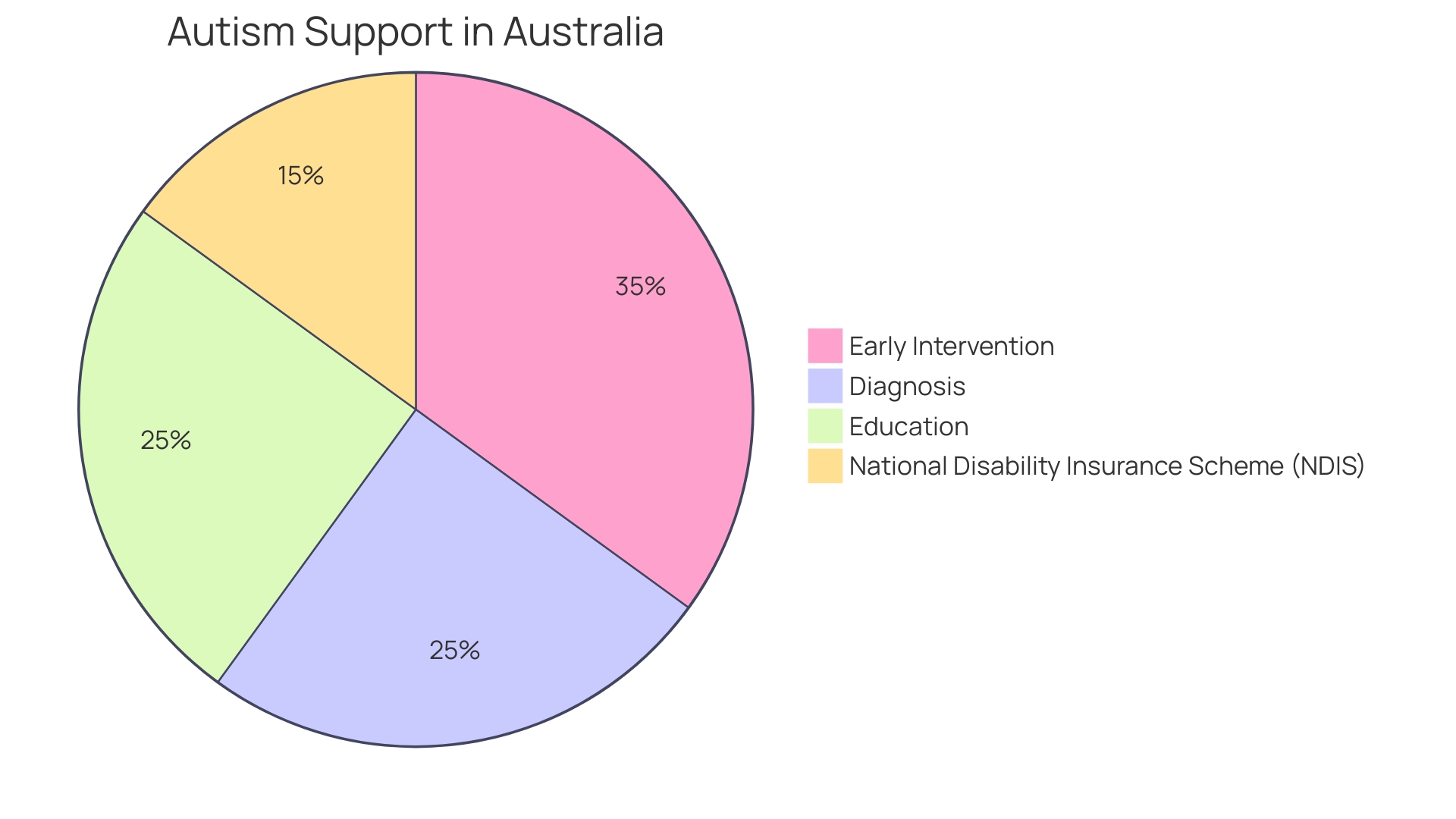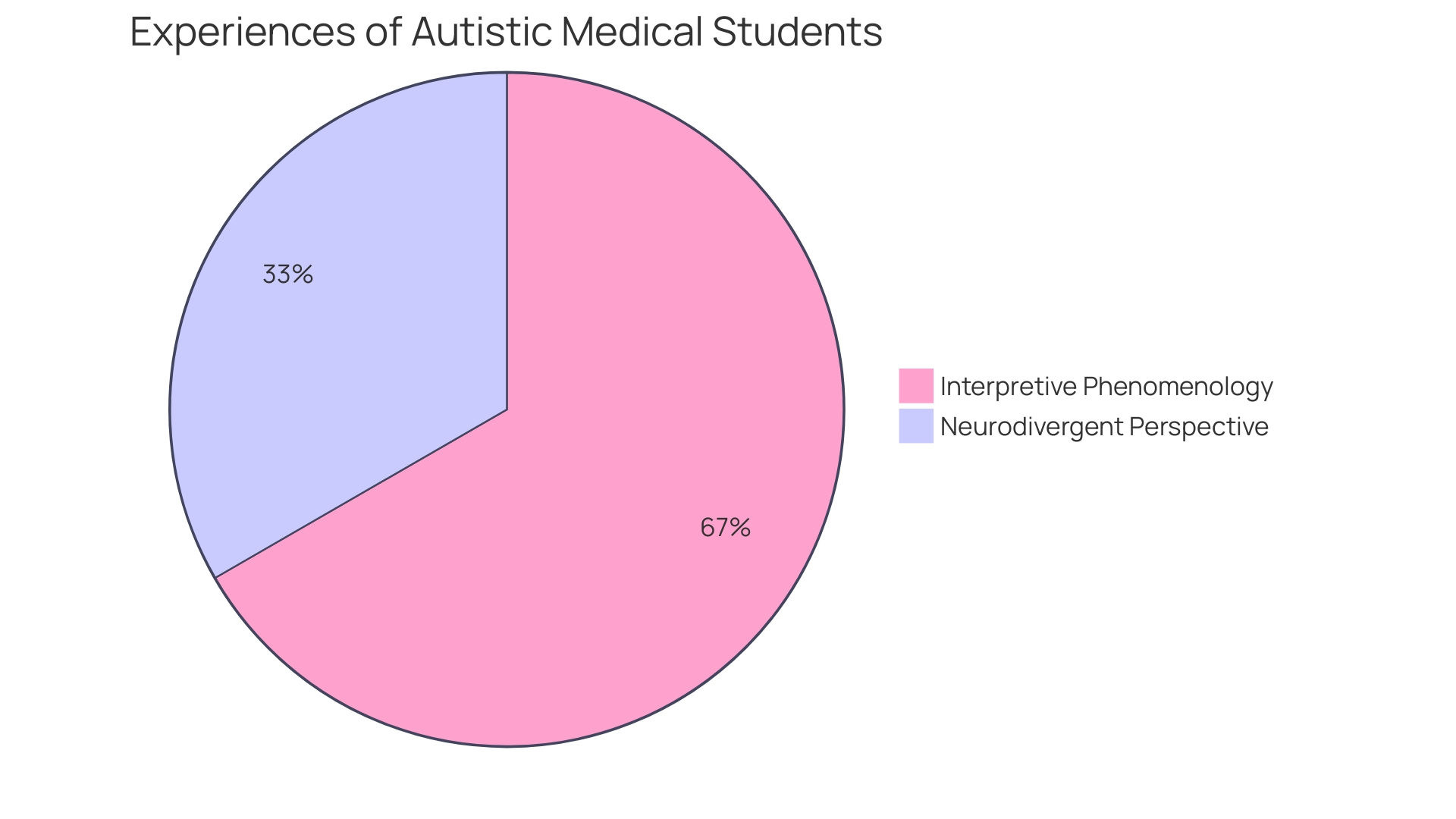Introduction
Applied Behavior Analysis (ABA) therapy is a transformative approach that significantly benefits students with autism in specialized educational settings. With personalized intervention plans, ABA therapists address a wide range of behaviors, guiding students towards more adaptive responses and enhancing their ability to learn and succeed academically. The efficacy of ABA is supported by substantial evidence, and its impact can be traced back to the groundbreaking work of Ole Ivar Lovaas.
Today, ABA therapy continues to evolve, preparing clinicians to address the nuanced needs of a diverse autistic population. By embracing the social model of disability, ABA therapy fosters a more equitable environment for autistic individuals to thrive on their terms. In summary, ABA therapy in academic settings is a comprehensive strategy that promotes inclusivity, recognizes individuality, and creates a supportive framework for overall development and integration into society.
How ABA Therapy Improves Academic Performance
Applied Behavior Analysis (ABA) therapy is a transformative approach that has shown to significantly benefit students with autism in specialized educational settings. Through personalized intervention plans, ABA therapists address a wide range of behaviors—some of which may pose safety risks or impede daily activities, while others deviate from what's typically expected in social contexts. The ultimate aim is to guide these students towards more adaptive responses to their environment, enhancing their ability to learn and succeed academically.
The efficacy of ABA is backed by substantial evidence. For instance, during the pandemic, a study by Colizzi et al. revealed that over a third of individuals with autism experienced an escalation in behavioral issues.
ABA's evidence-based methodologies, such as functional behavior assessments and the innovative Interview Informed Synthesized Functional Analysis (IISCA), are crucial in identifying the underlying functions of these behaviors, allowing for the development of tailored interventions that facilitate both home and educational success.
Historically, ABA therapy's impact can be traced back to the groundbreaking work of Ole Ivar Lovaas, whose intensive one-on-one therapy yielded remarkable results, including significant IQ gains and improved social functioning, for autistic children. These outcomes shifted the trajectory from institutionalization to the possibility of a more integrated life, underscoring the therapy's potential to level the playing field for children with autism.
Today's ABA therapy programs, like the one established in 1982 at SCSU, continue to evolve, preparing clinicians to address the nuanced needs of a diverse autistic population. The growing prevalence of autism, as highlighted by Dr. Jan Blacher, has led to a more inclusive understanding of the spectrum, further emphasizing the necessity for ABA therapists to be skilled in a variety of intervention techniques.
As we consider ABA therapy's role in facilitating fair and supportive participation of autistic children in all life domains—echoing the sentiment of Dr. David (Dan) R. Offord—it becomes clear that the therapy not only aims to meet immediate educational needs but also strives to build a foundation for lifelong mental health and well-being. The ultimate goal is to empower autistic children to contribute their unique strengths to their communities, while also ensuring that their caregivers have the resources needed to nurture their growth.
ABA's approach aligns with the social model of disability, which views disability as a result of social constructs rather than solely an individual's impairment. This perspective advocates for societal changes to accommodate diverse needs, rather than expecting individuals to conform to standard behaviors. By embracing this model, ABA therapy fosters a more equitable environment for autistic individuals, allowing them to thrive on their terms.
In summary, ABA therapy in academic settings is more than just a method for improving students' performance. It's a comprehensive strategy that promotes inclusivity, recognizes the individuality of each student, and seeks to create a supportive framework for their overall development and integration into society.
Utilizing Reinforcement Strategies in ABA Therapy
Reinforcement strategies in ABA therapy are not just tools for behavior management; they are vital in creating equitable learning opportunities for students with autism. Dr. David (Dan) R. Offord, a noted child psychiatrist, emphasized the importance of a 'fair race' for children, highlighting the need for supportive environments that recognize both the challenges and strengths of children with disabilities. By employing effective reinforcement strategies, we can motivate students and reward their academic efforts, ensuring they are supported in their educational journey.
According to recent perspectives, disability should be seen as a social construct rather than just a medical issue. This view encourages us to tailor our approaches within ABA to meet the diverse needs of individuals with autism, including those with co-occurring intellectual disabilities, which affect 31–55% of the population. By integrating the social model of disability into our reinforcement strategies, we can foster a more inclusive and supportive environment that values the unique contributions of each child.
The evolving understanding of autism, as noted by experts like Dr. Jan Blacher, demands that we adapt our reinforcement techniques to cater to the varied intellectual and adaptive capabilities of students. This means moving away from a one-size-fits-all approach to ABA therapy and towards more personalized methods that empower students with autism to participate meaningfully in their communities. Reinforcement strategies that are adaptable and culturally sensitive can significantly improve the mental health and well-being of these students, ensuring they are not excluded from the 'race' of growing up and learning.
As we refine our ABA practices, it's crucial to consider technology solutions that enhance coordinated care. These solutions can streamline processes for healthcare providers and improve the quality of care for students with autism. By integrating such advances into our reinforcement strategies, we can ensure that every student receives the best possible support on their path to academic success.

Fostering Focus, Motivation, and Socialization Skills
In the dynamic landscape of ABA therapy, the enhancement of focus, motivation, and socialization skills transcends traditional academic outcomes, paving the way for holistic development in students with autism. The intersection of therapy and education fosters an environment where each student's unique capabilities are nurtured, contributing to a more equitable society that values the mental health and well-being of all its members. Recognizing the assets that autistic children bring to their communities, ABA therapy aims to alleviate chronic stressors, support caregivers, and address unmet needs.
This approach aligns with the social model of disability, which posits that disability is shaped by social structures rather than solely by an individual’s impairments. Embracing this perspective, ABA professionals are encouraged to tailor their interventions, ensuring that students' individual differences are accounted for and celebrated. The shifts in understanding autism, as highlighted by Dr. Jan Blacher, underscore the necessity for nuanced and adaptable therapeutic strategies.
With the prevalence of autism now at 1 in 36 individuals, the demand for skilled behavior analysts who are well-versed in diverse cases has never been higher. ABA schools are thus tasked with equipping their students not just for academic achievement, but for meaningful participation in all life domains, laying a foundation for enduring success and fulfillment.
Creating a Structured and Supportive Learning Environment
Fostering a nurturing learning atmosphere is paramount for the educational success of students with autism. By integrating consistent routines, visual aids, and sensory-sensitive environments, educators and therapists can enhance the academic experience for these students, mitigating stress and anxiety. The transition to new educational settings can be particularly challenging for autistic students due to the unfamiliarity with new surroundings, faces, and expectations.
For instance, Lil, at 17, faced uncertainties transitioning from special education to a community-focused program, illustrating the importance of careful planning in fostering a smooth transition. Studies suggest that although autistic students may excel academically, they often encounter unique challenges when adapting to new academic and social demands. The assets of autistic individuals, such as meticulous attention to detail and distinctive cognitive perspectives, are highly beneficial in academic settings.
Hence, creating an inclusive environment is not only crucial for their well-being but also capitalizes on their inherent strengths. As we continue to recognize the growing number of autistic students in higher education, it is imperative that educational institutions adapt to support this diverse population. Engaging and supportive participation in educational domains is a key determinant of mental health and a cornerstone of equity.
It is essential that all children, particularly those with disabilities, receive the resources needed to flourish in their educational journey, ensuring a fair and equitable 'race' for academic achievement and personal growth.

Conclusion
In conclusion, ABA therapy is a transformative approach that significantly benefits students with autism in specialized educational settings. By addressing behaviors and utilizing personalized intervention plans, ABA therapists enhance students' ability to learn and succeed academically. The efficacy of ABA is supported by substantial evidence, tracing back to the groundbreaking work of Ole Ivar Lovaas.
ABA therapy embraces the social model of disability, fostering a more equitable environment for autistic individuals to thrive on their terms. Reinforcement strategies play a vital role in creating equitable learning opportunities by motivating students and rewarding their academic efforts.
In the dynamic landscape of ABA therapy, the enhancement of focus, motivation, and socialization skills goes beyond traditional academic outcomes. ABA therapy aims to alleviate stressors, support caregivers, and address unmet needs, recognizing the valuable contributions autistic children bring to their communities.
Creating a nurturing learning atmosphere is crucial for the educational success of students with autism. By integrating consistent routines, visual aids, and sensory-sensitive environments, educators and therapists can enhance the academic experience, mitigating stress and anxiety. It is important for educational institutions to create inclusive environments that capitalize on the strengths of autistic students.
In summary, ABA therapy in academic settings promotes inclusivity, recognizes individuality, and creates a supportive framework for overall development and integration into society. By addressing behaviors, utilizing reinforcement strategies, and creating a nurturing learning environment, ABA therapy empowers students with autism to thrive academically and contribute their unique strengths to their communities.




